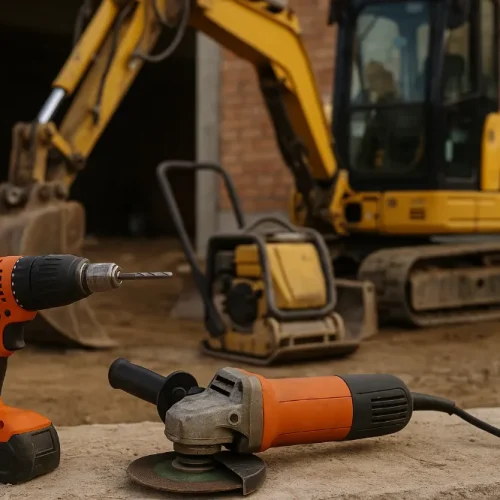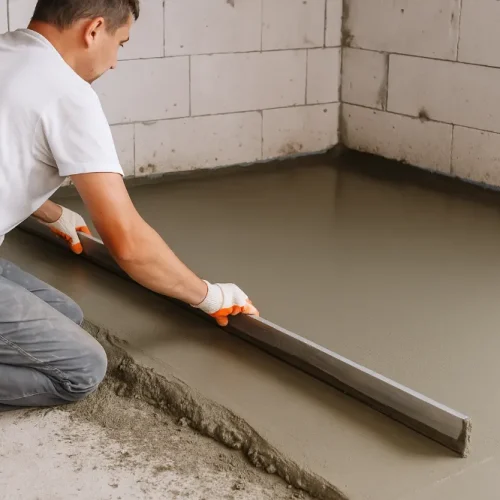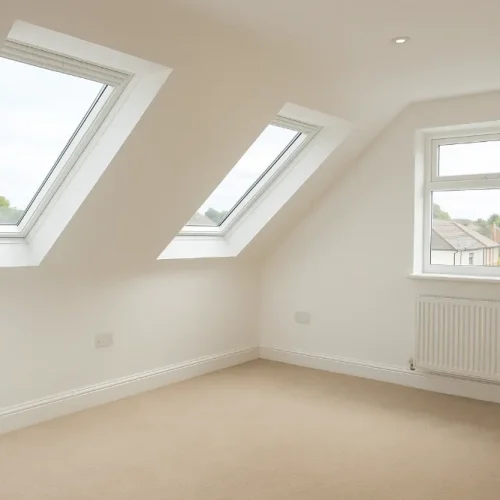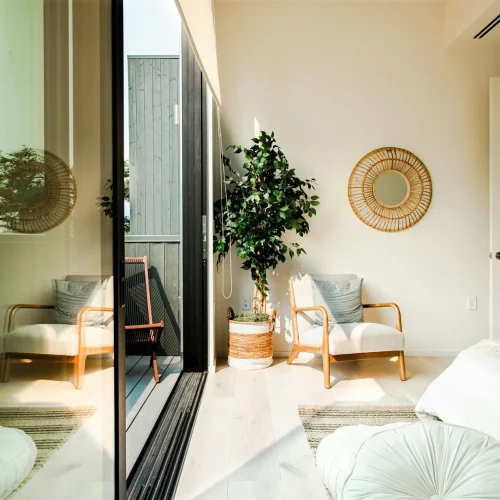
Designing a bedroom that prioritizes mobility is about more than convenience it’s about empowerment, comfort, and independence. For seniors, individuals with disabilities, or anyone recovering from injury or surgery, a mobility-friendly bedroom can drastically improve quality of life. By incorporating smart design elements, accessibility-focused furniture, and thoughtful layout decisions, you can transform any space into a safe, functional, and soothing retreat.
This article explores the essential principles of creating mobility-friendly bedroom environments, covering accessibility standards, layout optimization, adaptive furniture, safety features, and aesthetic design all with the goal of balancing comfort and functionality.
Understanding Mobility Needs
Before diving into design choices, it’s crucial to understand who will use the space and what specific mobility needs must be addressed. Mobility challenges can vary widely from individuals using wheelchairs, walkers, or canes to those who simply experience reduced strength or balance.
The goal is to ensure that every movement from getting out of bed to reaching for a lamp feels effortless and safe. Start by identifying mobility limitations, preferred sleeping positions, daily habits, and assistive devices that need accommodation. A personalized approach ensures that every modification serves a real purpose rather than just a visual one.
Key Design Principles for Mobility-Friendly Bedrooms
A mobility-friendly bedroom design typically follows three guiding principles: accessibility, safety, and simplicity.
- Accessibility
The room should be easy to navigate, with wide pathways and reachable furniture. Doorways, closets, and switches should all be within reach of someone seated or using mobility aids. - Safety
Reducing fall risks is essential. Smooth flooring, non-slip rugs, and well-placed grab bars contribute to a safer environment. - Simplicity
The fewer obstacles in the space, the better. A clean, minimalistic layout reduces clutter, prevents accidents, and makes navigation easier.
These core principles apply whether you’re designing a master suite, guest bedroom, or assisted living space.
Space Planning and Layout Optimization
The layout is the foundation of a mobility-friendly bedroom. The main objective is to maintain clear circulation paths typically at least 36 inches wide to allow smooth movement around furniture and fixtures.
1. Bed Placement
The bed should be easily accessible from multiple sides, ideally with at least three feet of clearance on both sides. For wheelchair users, it’s important that the bed height aligns with the seat height of their chair, making transfers seamless.
2. Furniture Arrangement
Avoid overcrowding. Each piece of furniture should serve a clear purpose, and all items should be placed within easy reach. For example:
- Keep nightstands close to the bed’s edge.
- Avoid sharp corners or low tables that can snag clothing or mobility aids.
- Choose lightweight furniture that can be easily moved if needed.
3. Electrical Accessibility
Install outlets and switches between 15 and 48 inches from the floor. This height range aligns with ADA (Americans with Disabilities Act) accessibility recommendations, ensuring that most users seated or standing can operate them comfortably. According to the U.S. Access Board guidelines, accessible design promotes independence and safety across environments (source: U.S. Access Board ADA Standards).
Consider smart home integration to control lighting, temperature, or window shades remotely.
Flooring: The Foundation of Safety
Flooring plays a major role in mobility and safety. Uneven or slippery surfaces increase the risk of falls, so it’s essential to choose materials that combine durability, traction, and smooth transitions.
Best Flooring Options:
- Low-pile carpet: Soft and slip-resistant, ideal for cushioning falls.
- Vinyl or luxury vinyl tile (LVT): Offers excellent traction and is wheelchair-friendly.
- Rubber flooring: Soft, non-slip, and resilient, often used in healthcare settings.
- Engineered wood: Smooth and stable, with fewer trip hazards than rugs.
Avoid loose rugs or high thresholds. If you must use area rugs, secure them with non-slip backing or carpet tape.
Bed Design and Adjustability
The bed is the centerpiece of a mobility-friendly bedroom. Its design directly affects comfort, independence, and ease of care.
Ideal Bed Features:
- Adjustable Height: Beds that raise or lower can accommodate transfers from wheelchairs or walkers.
- Adjustable Head and Foot Sections: These enhance comfort and can aid with circulation or respiratory issues.
- Sturdy Bed Frames: Avoid frames with protruding corners or legs that can catch wheels or toes.
- Grab Bars or Bed Rails: These can be attached to the frame or installed nearby to support entry and exit.
For seniors or those with balance issues, a bedside trapeze bar or floor-to-ceiling pole system can help with repositioning without assistance.
Lighting for Safety and Comfort
Good lighting reduces falls and improves visibility, particularly during nighttime movements. A layered lighting design—combining ambient, task, and accent lighting can provide both safety and atmosphere.
- Ambient Lighting: Ceiling fixtures or wall sconces provide general illumination.
- Task Lighting: Bedside lamps with touch controls or motion sensors offer quick access without fumbling for switches.
- Night Lights: Motion-activated floor lights along pathways guide nighttime navigation safely.
- Smart Lighting Systems: Voice-controlled or app-operated lighting adds convenience for users with limited mobility.
Consider the color temperature of bulbs as well warm tones create a relaxing atmosphere, while bright white lights improve clarity.
Adaptive and Accessible Furniture
Furniture design should promote independence and reduce strain. Avoid oversized pieces that restrict movement or items that require excessive bending or reaching.
Recommended Furniture Choices:
- Nightstands with Rounded Edges: Prevent bumps and injuries.
- Dressers with D-Shaped Handles: Easier to grip than small knobs.
- Chairs with Armrests: Provide support when sitting or standing.
- Wardrobes with Pull-Down Rods: Enable easier access to hanging clothes.
Install drawers on smooth glides and position storage areas between 20 and 48 inches from the floor, aligning with universal design standards.
Incorporating Assistive Technology
Modern mobility-friendly bedrooms increasingly integrate smart technology to simplify everyday tasks.
- Voice Assistants (e.g., Alexa, Google Home): Control lights, curtains, and thermostats with simple commands.
- Adjustable Smart Beds: Controlled via remote or app for personalized comfort.
- Smart Thermostats: Maintain ideal room temperature without manual adjustments.
- Motorized Blinds: Enable users to adjust lighting without standing.
Technology doesn’t just add convenience it supports autonomy and confidence.
Accessibility Standards and Guidelines
Designers and homeowners can refer to ADA Accessibility Guidelines (ADAAG) and Universal Design principles to ensure the room accommodates all users.
Key ADA Bedroom Considerations:
- Doorways should be at least 32 inches wide (preferably 36 for wheelchairs).
- Turning radius: at least 60 inches for wheelchair users.
- Outlets and controls within reach range: 15–48 inches above the floor.
- Lever-style door handles instead of round knobs.
Even if ADA compliance isn’t legally required for residential spaces, following these principles ensures comfort for everyone, regardless of ability.
Storage Solutions for Ease of Access
Traditional bedroom storage can be inconvenient for people with limited reach or dexterity. Redesigning closets and drawers to be reachable, organized, and safe makes a big difference.
Ideas for Accessible Storage:
- Install pull-down clothing rods and lower shelves.
- Use drawer organizers to prevent clutter.
- Choose slide-out baskets instead of deep bins.
- Add LED lighting inside closets for better visibility.
If possible, install open shelving units at wheelchair height for daily essentials. This eliminates the need to reach overhead or crouch low.
Enhancing Comfort Through Environmental Design
Mobility-friendly doesn’t mean clinical. Comfort, texture, and personality matter too. The bedroom should still feel inviting, warm, and personal while maintaining safety.
- Color Palette: Use calming tones like blues, greens, or warm neutrals.
- Textures: Combine soft fabrics with smooth surfaces for contrast without clutter.
- Window Treatments: Choose lightweight curtains or remote-controlled blinds.
- Temperature Control: Ensure vents and thermostats are easy to reach and adjust.
Small touches like artwork, soft bedding, and natural light can transform the space into a rejuvenating retreat.
Safety Features to Prioritize

Falls are one of the leading causes of injury among older adults. In a mobility-friendly bedroom, safety features must be non-negotiable.
Essential Additions:
- Grab Bars: Near the bed, doors, and bathroom entrances.
- Non-Slip Mats: Especially around transitions between bedroom and bathroom.
- Rounded Furniture Edges: Reduce injury risk.
- Emergency Call Buttons: Connect directly to caregivers or emergency services.
- Smoke and CO Detectors: Install at accessible height and ensure easy battery replacement.
Combine these features with regular maintenance checking for loose cords, slippery floors, or blocked pathways.
The Role of Caregivers and Family Members
A truly mobility-friendly environment benefits not just the individual but also caregivers and family members. A well-planned layout can ease caregiving tasks such as assisting with dressing, repositioning, or transfers.
When designing, involve caregivers in the planning process. Their insight ensures that every modification balances independence with support. For example, placing furniture at an angle that allows assistance from both sides of the bed can simplify daily routines.
Budget-Friendly Modifications
Creating a mobility-friendly bedroom doesn’t always require a full renovation. Many small, affordable upgrades can make a significant difference:
- Replace knobs with lever handles.
- Add motion-sensor lights.
- Use non-slip mats under rugs.
- Install grab bars or tension poles.
- Raise or lower the bed for easier transfers.
- Swap heavy furniture for lightweight alternatives.
Prioritize functionality first, then aesthetics. Gradual upgrades can transform a standard bedroom into an accessible haven over time.
Combining Style and Accessibility
One common misconception is that accessible design sacrifices beauty. In reality, modern mobility-friendly bedrooms can look elegant and contemporary. Many adaptive products like adjustable beds, accessible dressers, and ergonomic lighting are now available in designer styles.
Consider blending universal design principles with modern aesthetics:
- Use built-in storage to reduce clutter.
- Choose sleek, low-profile beds with hidden mobility features.
- Opt for neutral tones accented with textures for visual warmth.
- Integrate technology seamlessly (hidden cables, wireless systems).
The result is a space that looks luxurious while remaining practical.
Conclusion: Designing with Dignity and Independence
A mobility-friendly bedroom isn’t just a matter of design it’s a statement of respect for independence, safety, and well-being. When thoughtfully planned, such a space empowers its occupants to live freely and comfortably, regardless of physical limitations.
Every element from lighting and flooring to layout and furniture should serve a single purpose: to make life easier, safer, and more enjoyable. Whether you’re designing for yourself, a loved one, or a client, remember that accessibility and beauty can coexist. A well-designed bedroom can be both a sanctuary of comfort and a model of thoughtful inclusivity.
FAQs
A mobility-friendly bedroom prioritizes accessibility, safety, and comfort featuring clear pathways, reachable furniture, and non-slip flooring to support independent movement.
The bed should be level with a wheelchair seat usually between 20 and 23 inches high to make transfers easier and safer.
Pathways should be at least 36 inches wide, allowing wheelchairs or walkers to move comfortably without obstruction.
Low-pile carpet, vinyl, or rubber flooring are ideal since they’re smooth, durable, and provide traction for wheelchairs or mobility aids.
While not required, adjustable beds offer convenience, better posture, and easier transfers especially for users with limited mobility or medical needs.
Install motion-activated nightlights, bedside touch lamps, and voice-controlled lighting systems to enhance nighttime visibility and reduce fall risks.
Adding grab bars, replacing knobs with lever handles, using non-slip mats, and rearranging furniture for better movement can all be low-cost improvements.
Universal design ensures that a space is functional for all users, regardless of ability or age, focusing on inclusivity and long-term usability.
Voice assistants, smart thermostats, adjustable beds, and motorized window shades offer added independence and convenience.
Absolutely. Modern designs now combine accessibility with aesthetics, blending sleek furniture, calming colors, and seamless adaptive features.













